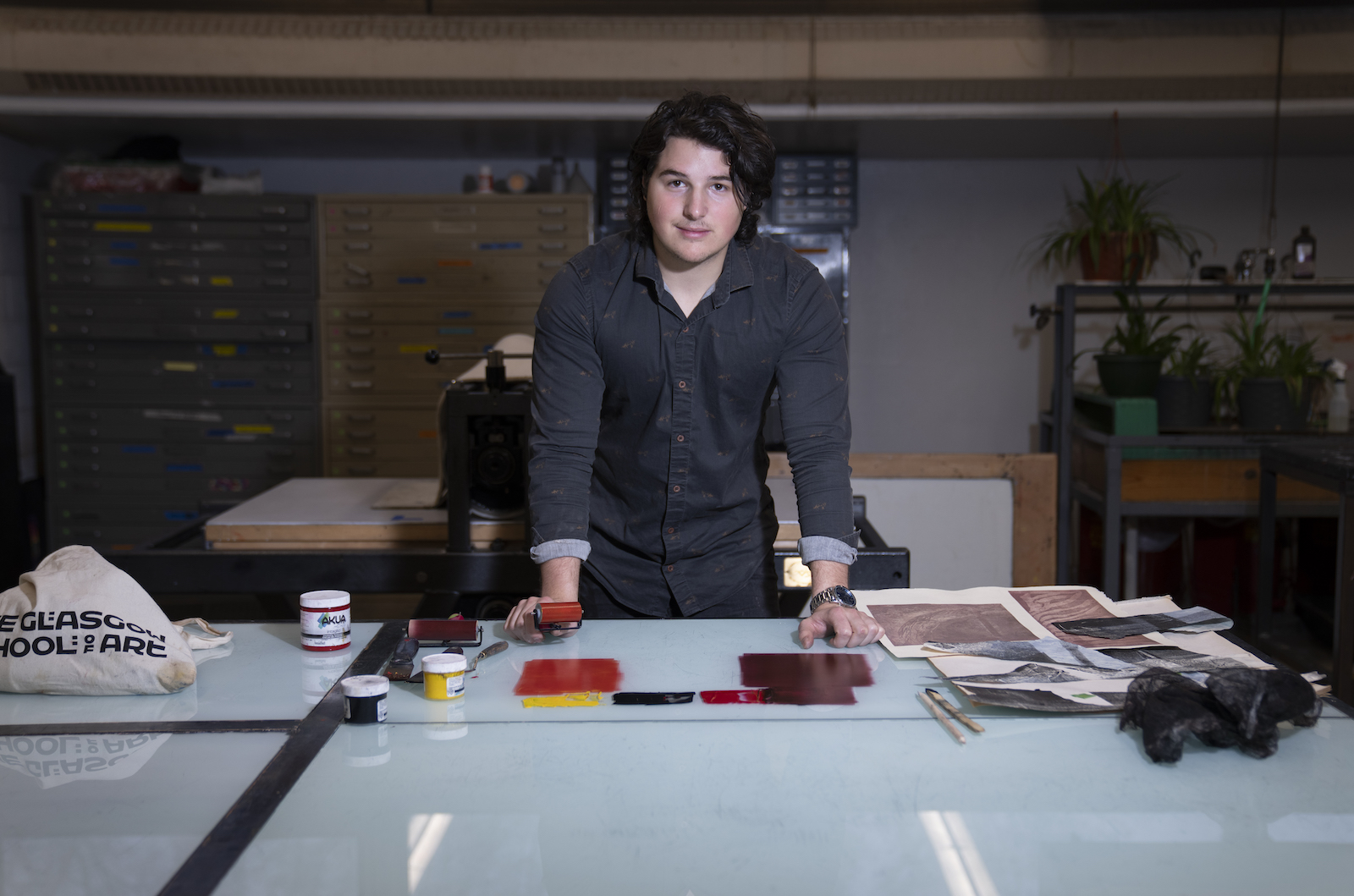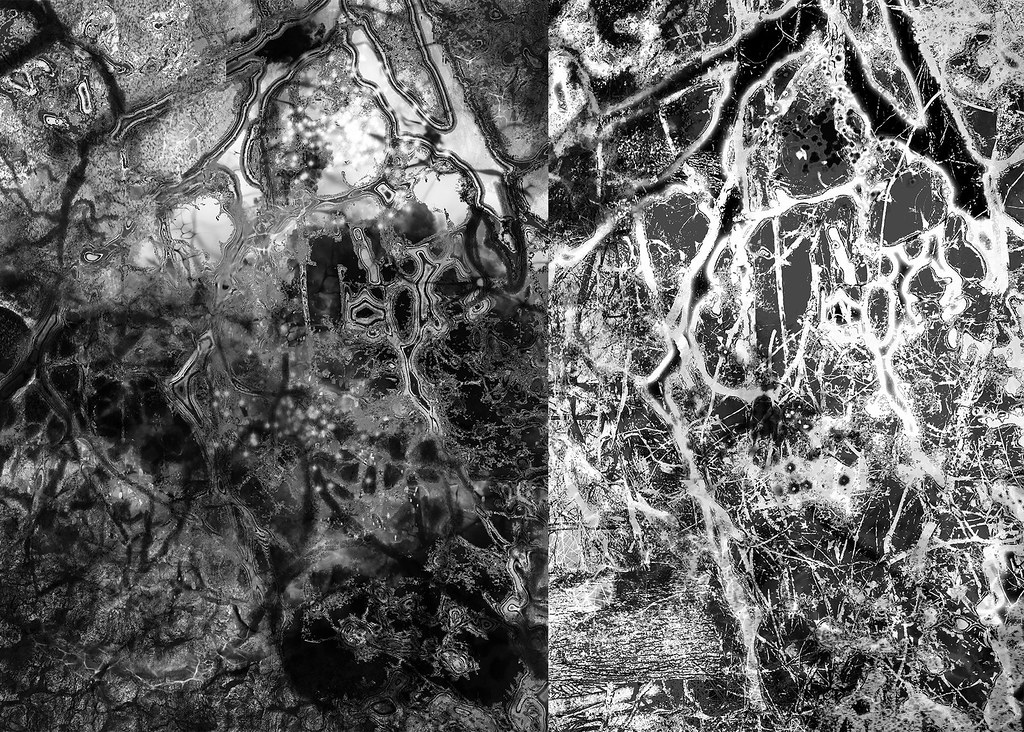Fusing Art, Science and Technology
April 08, 2022

Hartley Carlson ’23, a studio art major on a pre-med track, is finding creative ways to explore neuroscience through his artmaking.
By Jessica Weiss ’05
For Hartley Carlson ’23, one of the best ways to learn science is to draw it.
While working abroad as a doctor’s assistant in cardiology and radiology a few years ago, the studio art major, who is also on a pre-med track, found that making medical illustrations of the complex forms and shapes of the human body helped him to digest the material. It also resulted in beautiful artwork.
Since then, Carlson has sought to fuse art and science in innovative ways, whether through printmaking, machine learning and artificial intelligence (AI), or in a neuroscience lab.
“It’s amazing to see how much artistic skills can help in a scientific field and I am happy to have the ability to pursue art as my major,” he said. “I really enjoy merging the two.”
Carlson grew up in Columbia, Maryland the child of artists—his dad is a sculptor and painter and his mom does installations and printmaking. While his sister aspired to become an artist, he was drawn to medicine. After high school, he began taking classes in life sciences at Howard Community College; he especially enjoyed neuroscience and quantum computing. In 2019, a summer spent in Argentina working with a doctor and family friend confirmed that medicine was the right path for him. But making medical illustrations showed him that he also “needed to be making more art.”
Upon his return, he landed an internship at the National Institutes of Health (NIH), researching brain waves in mice. He transferred to the University of Maryland in 2020 and began taking a range of studio art courses on top of courses in science. He especially liked the variability of printmaking, where he worked on wood, metal and other surfaces.
“I never thought of myself as an artist, but it became the main thing I wanted to do,” he said. “Now I know I am an artist. And I love it.”
As a studio art major, he began to notice the interplay between his studies in art and science, and how they enhanced one another. For instance, in neuroscience he learned how the brain perceives light and defines contour lines and shapes and colors; that was a concept he was also focusing on in a painting course. And for an extra credit assignment in organic chemistry, he made a photographic print called a Cyanotype using the same chemical processes he was learning about in printmaking.
At NIH, he used Adobe softwares he’d learned in his art major to analyze ultrasonic sound waveforms of mice and to create figures and science graphics for his research. After presenting some of those figures, he was even asked if he could create more for other researchers in the lab. He also found that the precision of his work in wood shop, metal shop, painting and drawing helped him in procedures with mice like microsurgeries, which require the use of tiny photometry probes, optic cables, thin wires and small screws.
Carlson said the faculty and his fellow students at UMD have always been supportive of his ideas and perspectives, and make themselves available to bounce ideas and share materials. Becoming a studio art major, he said, was the “best call I’ve ever made.”
After he graduates next year, he plans to take time off to continue his artmaking and live and volunteer abroad before going to medical school. In the meantime, he will grow his art portfolio and find new ways to combine art and science.
For his senior studio art thesis, which he’s beginning to plan now, he will focus on the brain’s ability to create. Specifically, he’s hoping to explore how spontaneity happens in the process of making art. To do so, he will feed signals into a neural network, which is an AI algorithm that works like the brain, to create a wearable tool that he can train to generate art directly from the brain. The idea is that anyone could eventually use what he’s creating to make art from their mind—even in their sleep, he said.
“I know it’s a grandiose idea and it’s never really been done before, but this type of thing is definitely the future of AI,” he said. “One day AI will have to decide why they need humans and I think they’re going to find they need us because of our ability to create. What really separates humans from animals and AI is our ability to make art. Art is the language of the soul.”
UMD’s Arts for All initiative partners the arts with the sciences, technology and other disciplines to develop new and reimagined curricular and experiential offerings that nurture different ways of thinking to spark dialogue, understanding, problem solving and action. It bolsters a campuswide culture of creativity and innovation, making Maryland a national leader in leveraging the combined power of the arts, technology and social justice to collaboratively address grand challenges. Learn more.
Photos by David Andrews.



